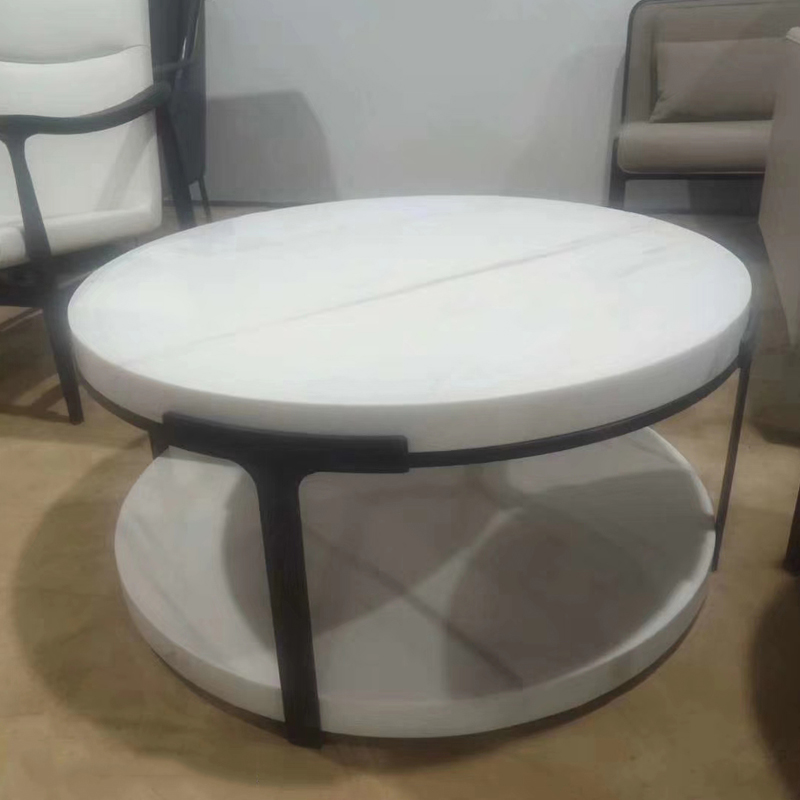
In an era where sustainability has become a critical factor in product development, Synthetic Stone has emerged as a popular alternative for furniture manufacturing. Unlike traditional materials that may deplete natural resources, Synthetic Stone is crafted with sustainability in mind, offering impressive durability, versatility, and aesthetic appeal. In this article, we will explore the sustainable manufacturing process of synthetic stone for furniture, emphasizing the methods and materials used to reduce environmental impact.

The foundation of sustainable synthetic stone manufacturing lies in selecting environmentally friendly materials. Synthetic stone is typically made from a combination of natural minerals, such as quartz or marble dust, and high-performance resins, which bind the components together. Many manufacturers use recycled materials—such as post-industrial waste or remnants from other stone fabrication processes—as a key component in synthetic stone. This reduces waste and minimizes the need for additional quarrying of natural stone, helping to preserve natural resources.
Additionally, some manufacturers are moving towards bio-based or low-emission resins, which reduce the use of petroleum-based chemicals. These eco-conscious raw material choices make synthetic stone production more sustainable from the outset.
The production of synthetic stone for furniture is optimized to consume less energy compared to the mining, transportation, and processing involved in natural stone. Advanced manufacturing facilities use energy-efficient equipment and practices that lower the carbon footprint of synthetic stone production. Techniques such as precision casting and molding are also employed to create the desired shapes and sizes, reducing material waste and optimizing energy use.
Some manufacturers employ renewable energy sources, such as solar or wind power, to operate their production lines. This shift not only helps reduce greenhouse gas emissions but also showcases the commitment of synthetic stone manufacturers to cleaner, more sustainable operations.
Water is essential in the production of synthetic stone, as it is used to cool equipment, mix materials, and clean molds. Sustainable manufacturers adopt water recycling systems to reuse water multiple times within the production process. These closed-loop water systems reduce the demand for fresh water and minimize the release of wastewater into the environment.
Additionally, wastewater treatment processes are applied to remove any harmful substances before the water is discharged, ensuring that no contaminants are introduced into local water bodies. By conserving and recycling water, synthetic stone manufacturing significantly reduces its environmental impact.
One of the advantages of synthetic stone production is the ability to control the exact proportions of materials, minimizing waste during manufacturing. Waste material from one production cycle is often reintegrated into the next, creating a closed-loop system that optimizes the use of resources. Offcuts, trimmings, and remnants from the manufacturing process are collected and reused, reducing the amount of waste sent to landfills.
Manufacturers are also exploring innovative ways to repurpose waste, using it in other building materials or as aggregate in new synthetic stone products. This commitment to waste reduction aligns with circular economy principles, ensuring that fewer resources are needed to produce high-quality, durable synthetic stone furniture.
Volatile organic compounds (VOCs) are often released during the production and curing of synthetic stone, which can contribute to indoor air pollution and environmental damage. To counteract this, sustainable manufacturers use low-VOC or VOC-free resins and binding agents. These materials not only improve the environmental profile of synthetic stone but also contribute to better indoor air quality for consumers who purchase synthetic stone furniture.
Low-VOC synthetic stone products are especially valuable in residential and commercial spaces, where air quality is a priority. This commitment to low emissions demonstrates the industry’s efforts to create safer, healthier products without compromising durability or performance.
A crucial aspect of sustainability in synthetic stone furniture lies in the material's durability. Synthetic Stone Tables and furniture pieces are engineered to resist stains, scratches, and damage from daily wear, which significantly extends their usable life. Unlike natural stone, which can require regular maintenance or sealing, synthetic stone is low-maintenance, reducing the need for harsh cleaning chemicals and treatments.
This longevity means that synthetic stone furniture does not need to be replaced as frequently as some other materials, lowering the overall demand for resources. By creating products that are designed to last, synthetic stone manufacturers contribute to a more sustainable economy, where fewer materials are consumed over time.
In addition to sustainable manufacturing practices, many synthetic stone manufacturers focus on eco-friendly packaging and transportation methods. Packaging materials such as recycled cardboard, biodegradable plastics, and minimal packaging designs help reduce waste. For large furniture items, some companies have switched to reusable or returnable packaging options, further minimizing their environmental footprint.
Manufacturers are also mindful of their transportation emissions, opting for efficient shipping routes and partnering with logistics providers who prioritize green practices. By reducing the packaging and transportation impact, synthetic stone companies ensure that sustainability extends beyond the factory and into the hands of the end customer.
To further Solidify their commitment to sustainability, many synthetic stone manufacturers seek certifications that attest to the eco-friendly nature of their products. Certifications like GREENGUARD, ISO 14001, and Cradle to Cradle provide third-party validation of sustainable practices in production, materials, and environmental impact. These certifications are a transparent way for manufacturers to demonstrate their dedication to sustainable practices, helping consumers make informed choices.
Additionally, adherence to industry standards like LEED (Leadership in Energy and Environmental Design) encourages manufacturers to continually improve their practices and products, ensuring a consistent focus on sustainability in all aspects of synthetic stone furniture production.
Synthetic stone furniture offers a sustainable alternative to traditional materials by incorporating eco-friendly practices throughout the manufacturing process. From the selection of recycled and low-emission materials to energy-efficient production techniques, water conservation, waste minimization, and durability, the process is designed to reduce environmental impact while delivering high-quality, versatile products.
The use of synthetic stone for tables and other furniture items appeals to both designers and consumers who value sustainability without compromising aesthetics or functionality. As the demand for greener, more responsible products continues to rise, synthetic stone stands out as a valuable choice for those looking to support a sustainable lifestyle. Through innovation and commitment to sustainable manufacturing, synthetic stone manufacturers are paving the way for a cleaner, more eco-friendly furniture industry.